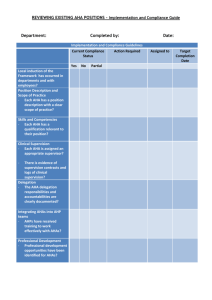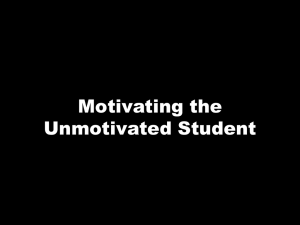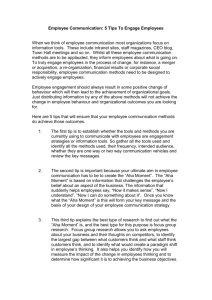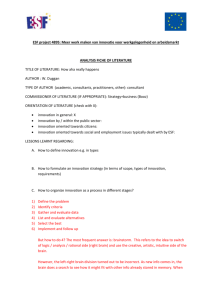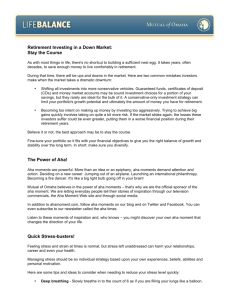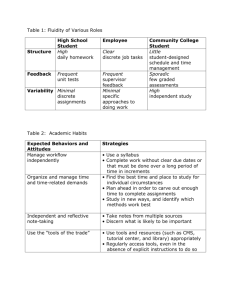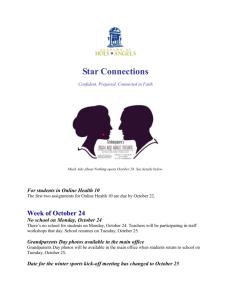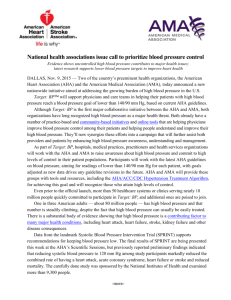Are Your Communication Strategies Really Engaging Employees
advertisement
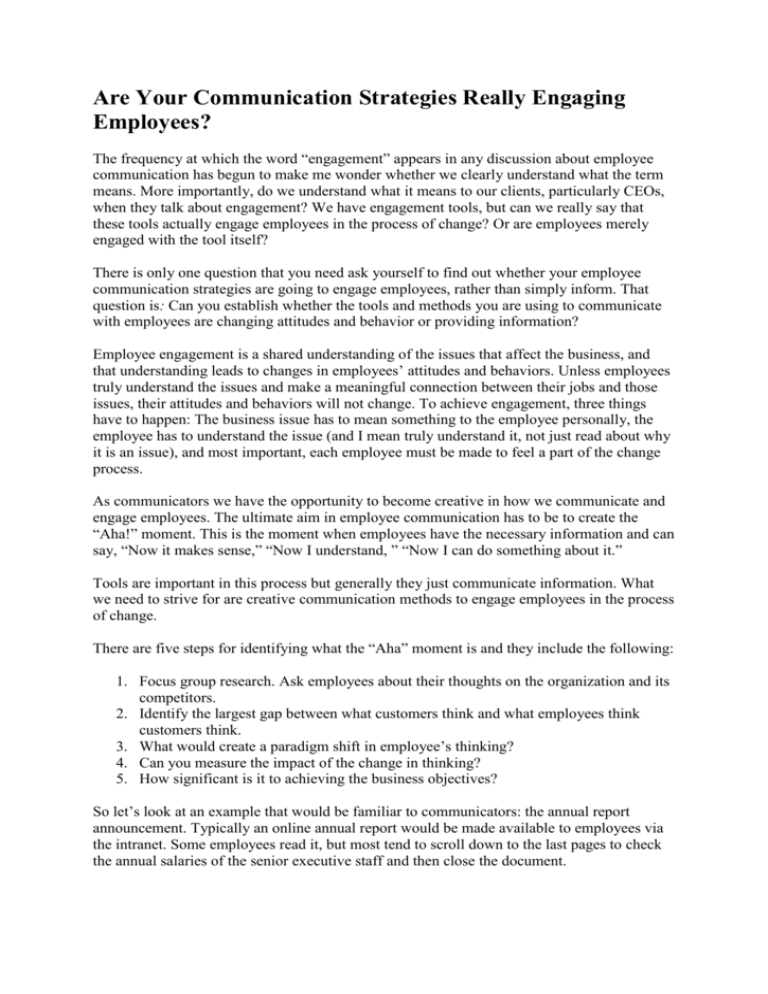
Are Your Communication Strategies Really Engaging Employees? The frequency at which the word “engagement” appears in any discussion about employee communication has begun to make me wonder whether we clearly understand what the term means. More importantly, do we understand what it means to our clients, particularly CEOs, when they talk about engagement? We have engagement tools, but can we really say that these tools actually engage employees in the process of change? Or are employees merely engaged with the tool itself? There is only one question that you need ask yourself to find out whether your employee communication strategies are going to engage employees, rather than simply inform. That question is: Can you establish whether the tools and methods you are using to communicate with employees are changing attitudes and behavior or providing information? Employee engagement is a shared understanding of the issues that affect the business, and that understanding leads to changes in employees’ attitudes and behaviors. Unless employees truly understand the issues and make a meaningful connection between their jobs and those issues, their attitudes and behaviors will not change. To achieve engagement, three things have to happen: The business issue has to mean something to the employee personally, the employee has to understand the issue (and I mean truly understand it, not just read about why it is an issue), and most important, each employee must be made to feel a part of the change process. As communicators we have the opportunity to become creative in how we communicate and engage employees. The ultimate aim in employee communication has to be to create the “Aha!” moment. This is the moment when employees have the necessary information and can say, “Now it makes sense,” “Now I understand, ” “Now I can do something about it.” Tools are important in this process but generally they just communicate information. What we need to strive for are creative communication methods to engage employees in the process of change. There are five steps for identifying what the “Aha” moment is and they include the following: 1. Focus group research. Ask employees about their thoughts on the organization and its competitors. 2. Identify the largest gap between what customers think and what employees think customers think. 3. What would create a paradigm shift in employee’s thinking? 4. Can you measure the impact of the change in thinking? 5. How significant is it to achieving the business objectives? So let’s look at an example that would be familiar to communicators: the annual report announcement. Typically an online annual report would be made available to employees via the intranet. Some employees read it, but most tend to scroll down to the last pages to check the annual salaries of the senior executive staff and then close the document. Let’s imagine that the results in this annual report are very poor and the CEO is determined that employees understand the issues surrounding the poor results and become fully engaged to help turn the company around. Here’s how one organization accomplished this. The company held four brown bag lunch meetings over four weeks where employees could attend for free for one hour and hear from an outside professional about how to invest in the share market. Importantly, there was no obvious link between the meeting topic and the organization the employees worked for. At week three, they were analyzing annual reports and generally deciding whether they would invest in a particular company based on the information contained in the report. By the fourth week they were given another annual report and asked the same question, “would you invest in this company?” The answer was overwhelmingly no. And of course this last company was the one they all worked for, which brought them to the “Aha!” moment. Now the organization’s employees understood and were engaged and ready to become involved in turning the company around through teamwork and new initiatives. Here are some steps you can follow to ensure that you can come up with creative ways to communicate with employees and engage them in the process of change. To challenge beliefs that your employees have about your organization, you need to have facts. The marketing department is an excellent source of facts about the business, with research on brand image, customer satisfaction, customer and non- customer views on competitors and information about market segments. Each of these areas provide valuable information on opportunities to link employees with business issues that can be measured. For example, the organization should have facts about how customers feel about the service provided by the organization’s call centre. Employees will also have an opinion about how the believe customers perceive their service. By taking the results of the customer feedback and presenting it to staff this often creates an “Aha moment” because customer feedback is typically better than what employees anticipate. Once you have shared this information, the objective is to then explore ways that employees can become engaged in further improving that customer feedback. Focus groups are another excellent way to find out what employees think about different aspects of these areas and how their beliefs can be challenged as you need to help them better understand the issues that affect the business. Key sources of business data are customer experience data, business results by product or service stream, competitor customer feedback, and measures of the attributes of your brand. These are sources of data that you can use as a measure of improvement as a result of your employee engagement strategy. When selecting business outcomes as a measure for your employee communication strategy, you need to be quite certain that the strategy you implement can actually affect the business outcomes you have decided to focus on. Finally, when it comes to any employee engagement strategy, whether it be total transformation of a business or improvement in one aspect, you can rarely go it alone. Partnering with other areas of your organization including marketing and human resources will ensure that the optimum outcome is achieved for your organization.
